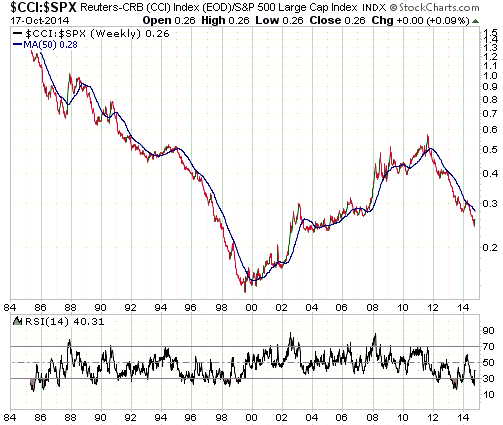This blog post is a slightly modified excerpt from a recent TSI commentary.
“If you believe in the thesis that world GDP will continue to expand and that population growth will continue, then you should own natural resources. New people who are born will want to eat, drive, and build houses. This trend offers long-term support for natural resources.”
The above is a comment by Rick Rule in an article titled “Are the Worst of Times Yet to Come?“. I consider Rick Rule to be a brilliant investor in natural-resource companies and agree with his investment strategy. I also agree with everything in the afore-linked article EXCEPT the above comment. If it is true that the prices of natural resources are supported by economic and population growth, then why is it that world population and world GDP have grown relentlessly over the past 200 years and yet over that entire period the real prices of most commodities have been in downward trends?
The fact is that economic growth causes prices, including the prices of most natural resources, to become LOWER, not higher. Real growth involves producing more with less. That’s why the fastest-growing industries generally have downward-trending product prices. However, the downward trend in prices that would otherwise occur due to real growth can be counteracted by monetary inflation and political intervention, and these days that’s exactly what happens most of the time. These days, monetary inflation causes prices (prices in general, not all prices) to have an upward bias even during periods of economic progress — periods when prices, on average, should be trending downward. This is because in addition to reducing the purchasing power of money, an effect of monetary inflation is to make the economy less efficient by distorting relative price signals. Political intervention also puts upward pressure on prices by placing obstacles in the way of more efficient production.
Consequently, genuine economic growth is most definitely not an ingredient for large rises in natural-resource prices. Instead, two of the three main ingredients are monetary inflation and an increase in politically-motivated/directed spending.
The third main ingredient is valuation. The relative valuations of different assets and commodities will have a big influence on which prices are affected the most by the current cycle’s monetary inflation. In particular, for commodities to be major beneficiaries of monetary inflation, commodity prices should be low relative to the prices of equities and bonds. According to the following weekly chart, commodity prices (as represented by the CCI) are currently near a 10-year low relative to the S&P500 Index, which is certainly low enough to enable a multi-quarter period of relative strength.

 Print This Post
Print This Post
